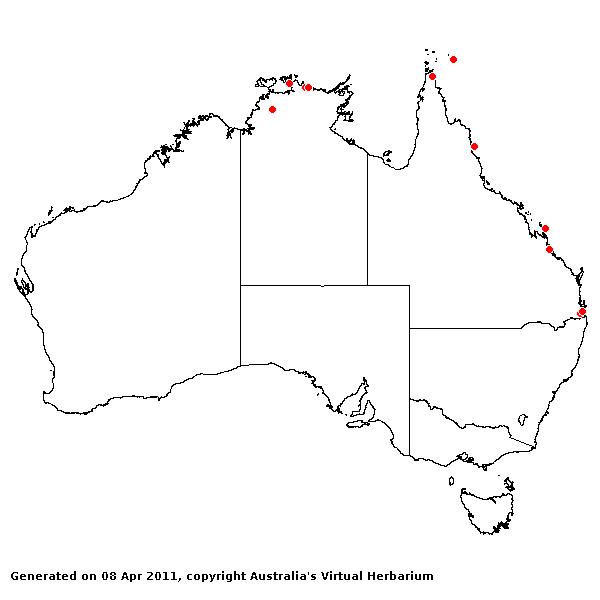Bambusa vulgaris* Schrad. Wendl.
Coll. Pl. ii. 26. t. 47. (1810).
Classification. (GPWG 2001) : Subfamily
Bambusoideae. Tribe Bambuseae.
Type of Basionym or
Protologue Information: T: Anon., India: cultivated (BM (possible)).
Recent synonyms:
B. arundinacea auct.
Key references
(books and floras): [2008] S.W.L.Jacobs, R.D.B.Walley & D.J.B.Wheeler, Grasses
of New South Wales.
Habit.
Perennial. Rhizomes present, short. Basal leaf sheaths absent. Culms
geniculately ascending, 1500–2000 cm tall, 40–100 mm diam., woody. Mid-culm
internodes hollow, thin-walled. Lateral branches dendroid. Leaf-sheaths hairy.
Leaf-sheath auricles present. Ligule an eciliate membrane. Leaf-blades
lanceolate, 15–30 cm long, 18–45 mm wide.
Inflorescence.
Inflorescence compound, a panicle.
Spikelets.
Fertile spikelets 1 or more flowered, with 1 fertile floret (4–12), comprising
4–12 fertile floret(s), with diminished florets at the apex, oblong, laterally
compressed, 10–20 mm long.
Glumes. Glumes
similar. Lower glume ovate, coriaceous, without keels. Upper glume ovate,
coriaceous, without keels.
Florets.
Fertile lemma 9–11 mm long, without keel, 11–15 -nerved. Palea 6 -nerved.
Lodicules present. Anthers 6.
Continental
Distribution: Africa, Temperate Asia, Tropical Asia, Australasia, Pacific,
and South America.
Australian
Distribution: Queensland, New South Wales.
Queensland:
Cook, Moreton.

